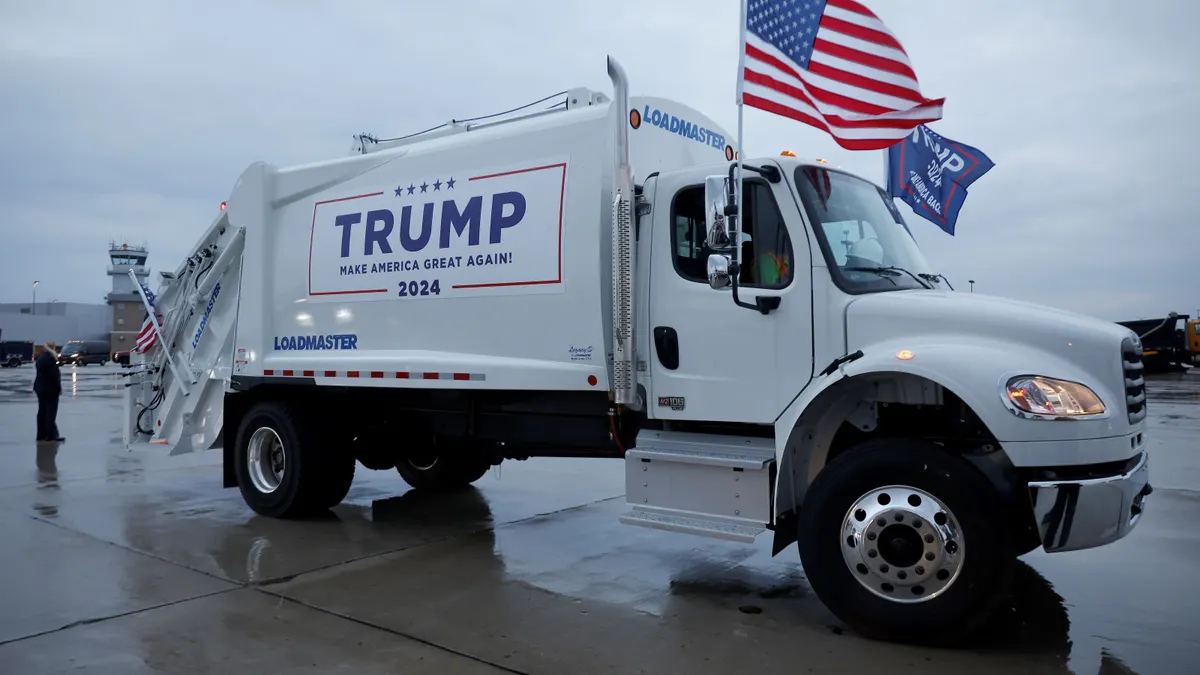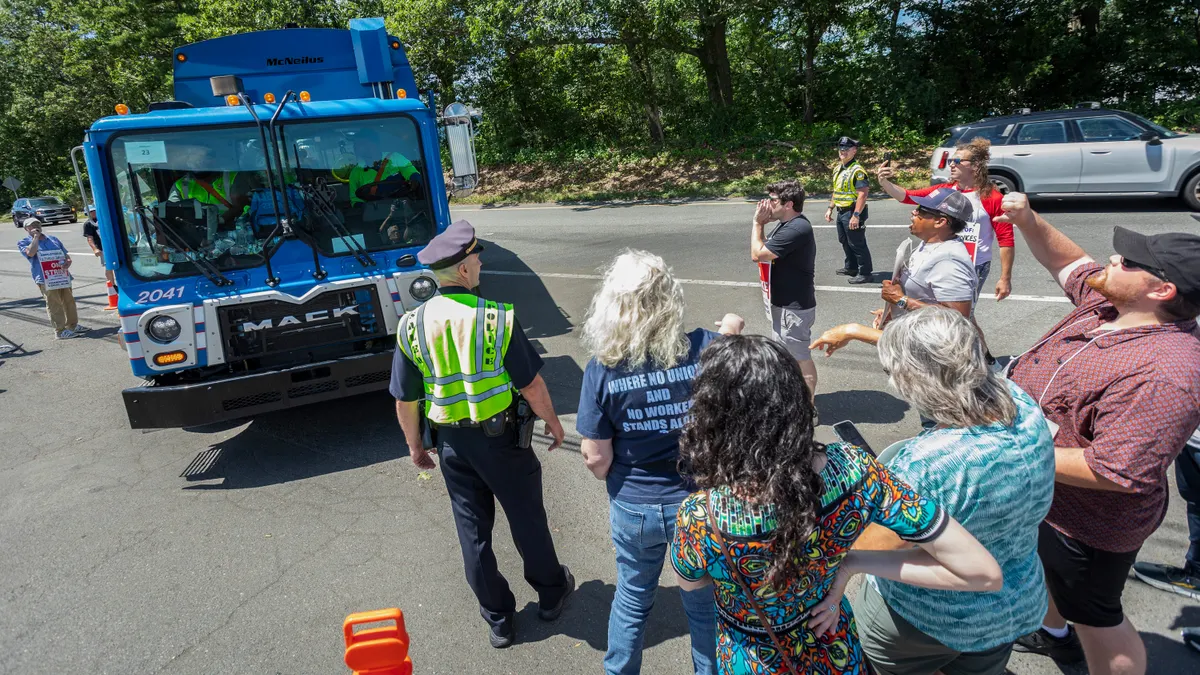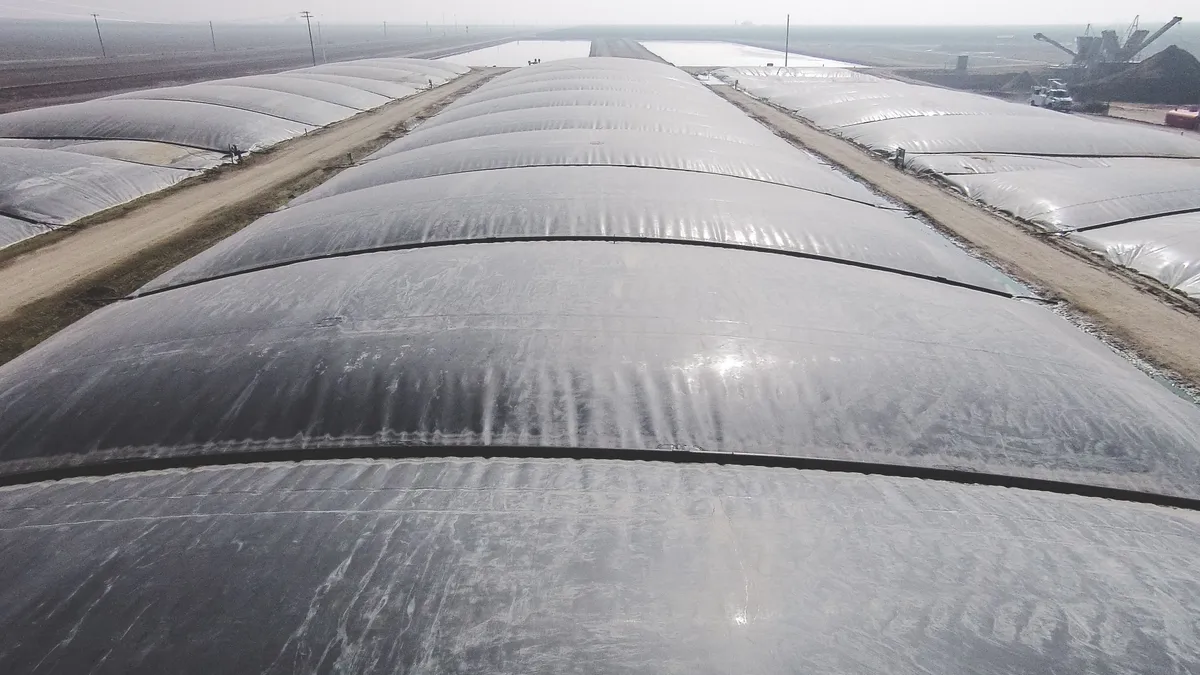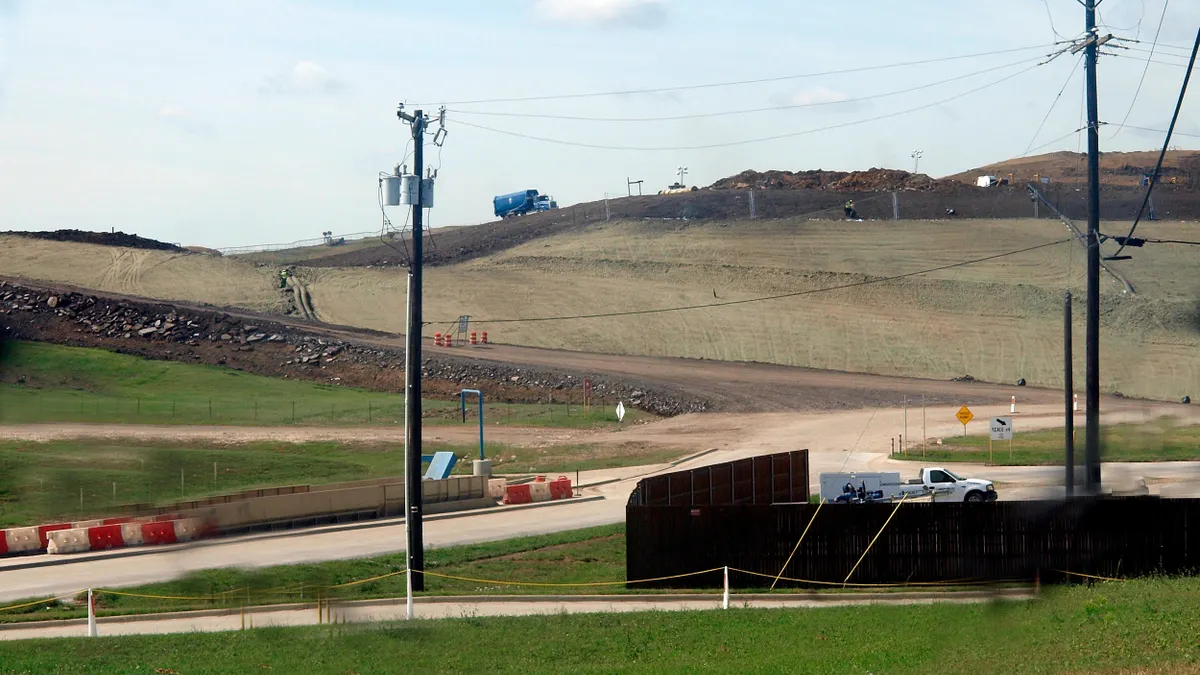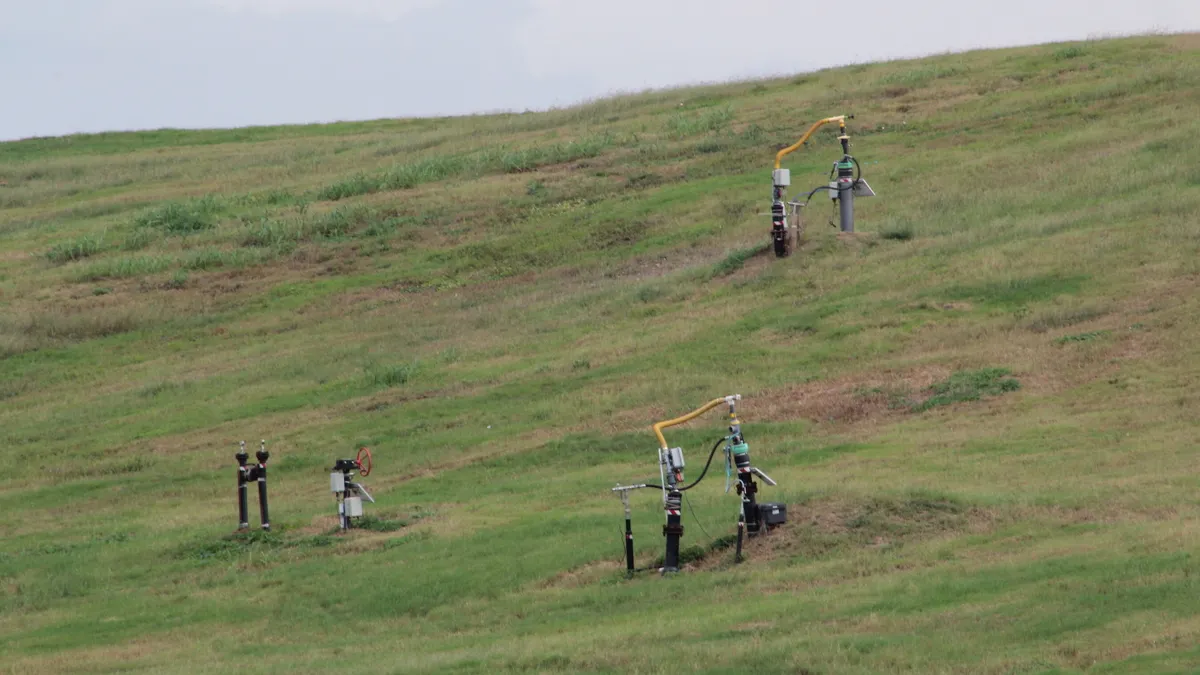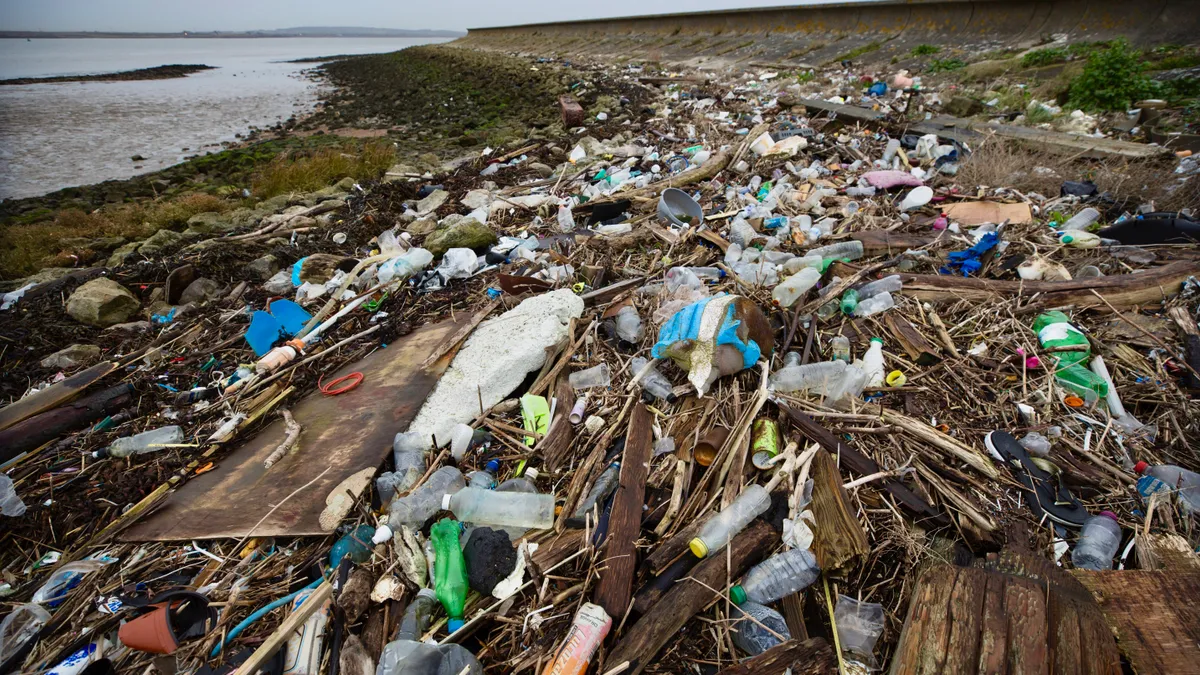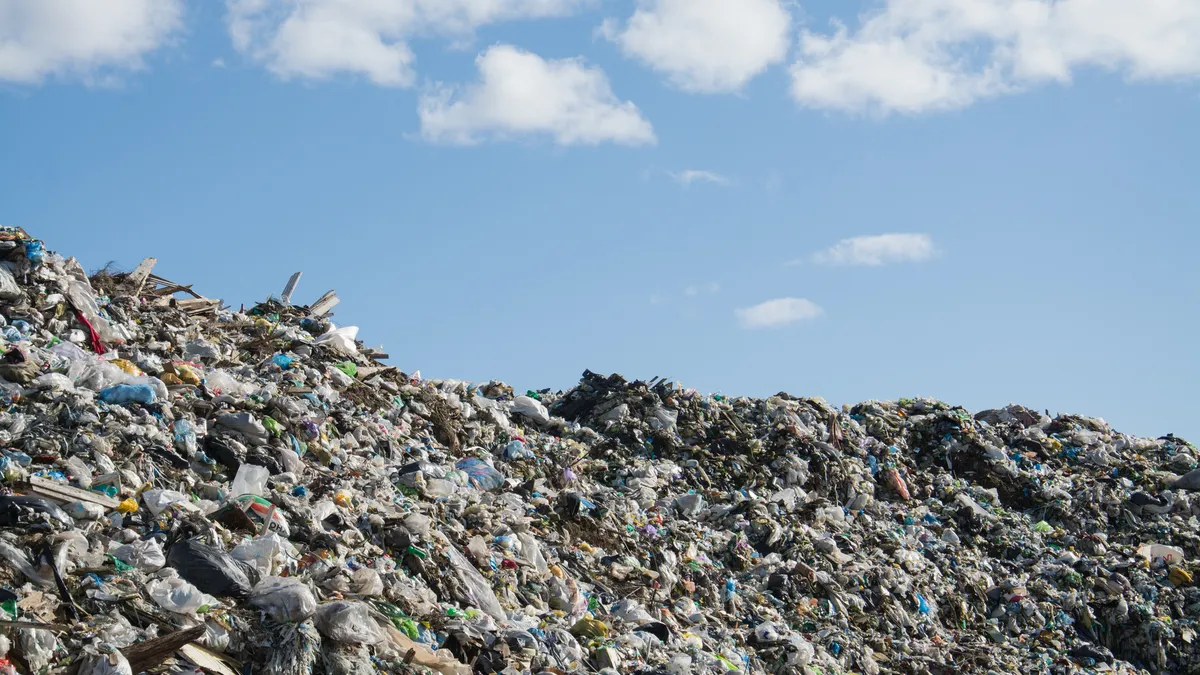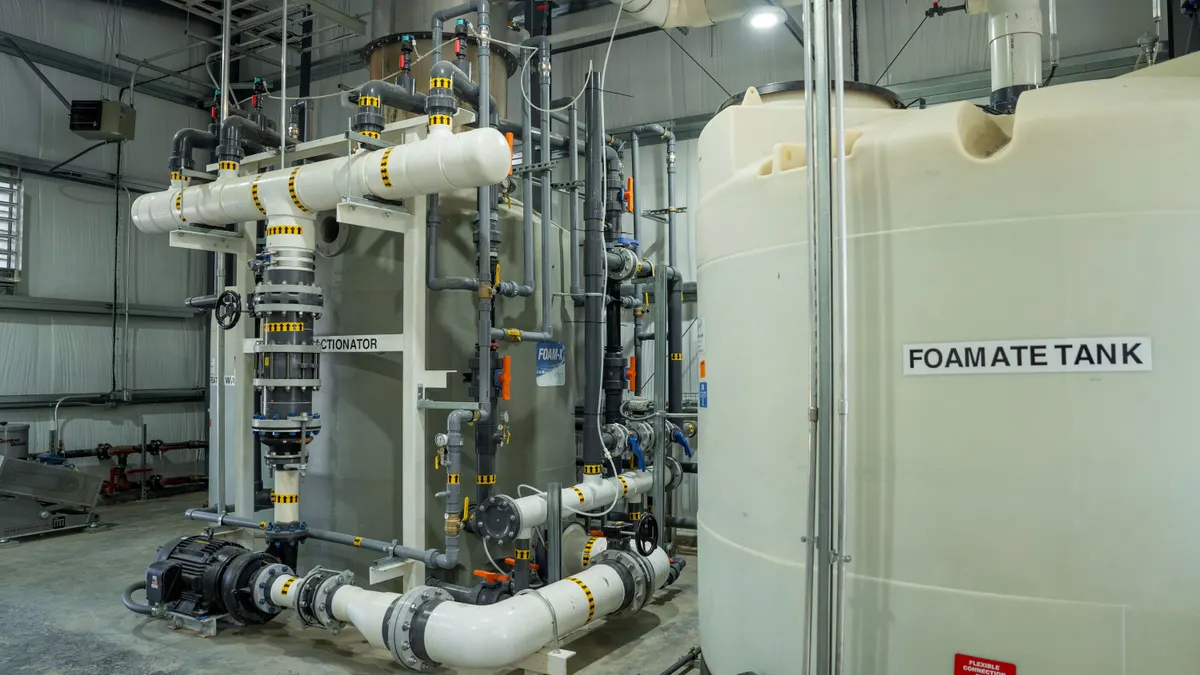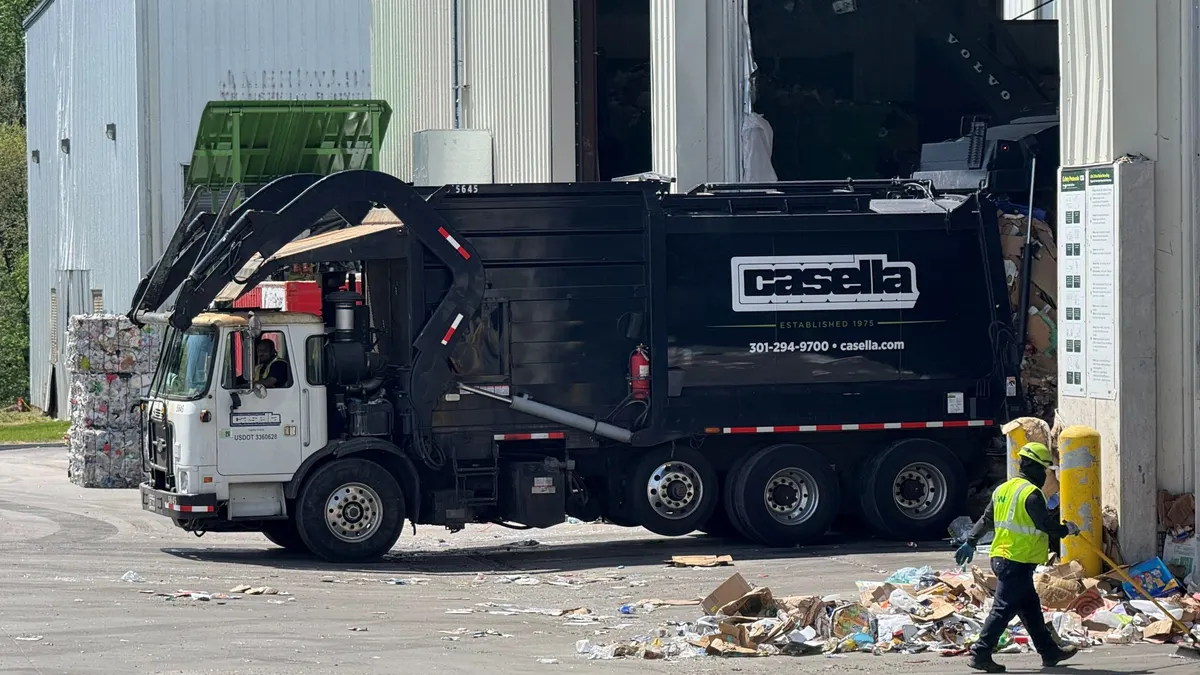This is the latest installment in Waste Dive’s Biogas Monthly series.
EPA Administrator Lee Zeldin has set out a busy regulatory (or deregulatory) agenda over the first 100 days of President Donald Trump's term, but one regulation he's left untouched is the Renewable Fuel Standard. The regulation sets a certain amount of non-petroleum fuel credits that refiners and importers of petroleum-based fuels must acquire in a given year, which plays an important role in creating demand for the fuels.
The U.S. EPA initially set those levels, known as Renewable Volume Obligations, annually, but it chose to set the targets for three years in 2023. With those targets set to expire at the end of this year, many fuel producers are wondering how aggressive the Trump administration will be for the next round of RVOs.
The EPA is already overdue to set those targets, and the market for renewable fuels is slumping amid the uncertainty. That's in part because the Biden EPA floated the possibility of a waiver for obligated parties that didn't hit their targets last year, said Adam Schubert, a senior associate at Stillwater Associates. That proposal is now in the hands of the Trump administration.
The waiver would apply to 2024 targets, and it's looking like the market may need another waiver again this year as production lags behind demand. But no one in the fuels industry quite knows what to expect, according to Schubert.
“For producers, they don’t know what the volume is. For buyers, it gives them an incentive not to buy. That creates a bad incentive,” he said. “The market’s still trying to figure out 2024 and 2025 while waiting for 2026 to come out.”
Prices for RINs, the credits generated by alternative fuel producers, have been trading lower since late last year, hurting the incentive.
Schubert said there are also structural aspects of the transportation fuel credit market that will be hard for the EPA to solve. Namely, many of the fleets that can run on compressed natural gas and buy RNG already do. In order for there to be more demand for these fuels, more CNG-powered fleets would need to come online. But those fleets have typically come about through state-level incentives like in California, and most regulators today are looking to facilitate a transition toward electric rather than CNG.
There are several paths forward: New CNG-powered engines are entering the market with longer range that might entice more fleet owners to switch. More states could allow for a switch to CNG-powered vehicles amid attacks on clean trucks mandates. Or, the EPA could take another look at eRINs, the controversial proposal that would create a credit for renewable electricity used to power vehicles.
Schubert said the EPA is stuck between a rock and a hard place as it finalizes its RFS policy, but he expects action from the agency soon — it has historically issued a proposed rule in June and a final rule in November. Until then, he expects continued uncertainty in the credit market.
WM opens pair of new facilities
WM announced the opening of two new landfill-gas-to-RNG facilities in April, one near Philadelphia and another in DeKalb, Illinois.
The Bucks County, Pennsylvania facility is located at WM's Fairless Landfill. The company invested $131 million into the site near Philadelphia, which it expects will generate up to 3 million mmBtus of energy annually. It's WM's second RNG facility in the area, alongside three existing landfill-gas-to-energy projects.
The DeKalb facility outside of Chicago is WM's third RNG facility in Illinois. The company invested $60 million in the facility, which it expects could produce up to 1 million mmBtus of energy annually at full capacity.
WM has a goal to build 20 RNG facilities from 2022 through 2026, with a planned investment of $1.6 billion. It reported eight are now operational following the Pennsylvania plant's opening.
Viridi Energy brings Alabama project online
Private equity-backed Viridi began operations at its first developed landfill-gas-to-RNG facility this month. The facility, located in Summerdale, Alabama, is at a landfill owned by the Solid Waste Disposal Authority of Baldwin County.
The Alabama site can produce more than 160,000 mmBtus of RNG annually. Viridi secured a multiyear offtake agreement with ACT Group for the site, according to a release.
Viridi took over the site mid-development. The company touted its success in bringing an RNG project online at a smaller landfill, calling it “a blueprint for scalable, community-centered RNG projects.”
“This is a defining moment for Viridi Energy,” said CEO Dan Crouse.
Viridi is in the process of developing several biogas projects, and has already inked an offtake agreement for multiple other sites with Canadian utility Énergir.
Vision RNG announces credit sale
Developer Vision RNG sold $28.8 million in investment tax credits, the company announced on April 15. The credits stem from its Laurel Ridge Landfill project, at a facility owned by Waste Connections in Corbin, Kentucky.
That facility came online ahead of schedule last year. It generates roughly 450,000 mmBtus of RNG annually. Vision is developing another project for Waste Connections at its Jackson, Nebraska, landfill.
The investment tax credit sale was possible thanks to provisions of the Inflation Reduction Act, Vision said in a release. It's the second such sale the company has announced in recent months — in October, it announced an $11.6 million sale connected to a project at Meridian Waste's Eagle Ridge Landfill in Missouri.
Proceeds from the tax credit sales will allow the company to "further invest in projects that deliver both strong environmental and economic returns," CFO Kevin Johnson said in a statement.
Montauk Renewables starts project in Oklahoma
A subsidiary of Montauk Renewables broke ground on an RNG project at the American Environmental Landfill in Tulsa, Oklahoma, on April 9. The project extends a gas rights and lease agreement between the two entities.
Once operational, Montauk expects its facility to produce an average of 1,500 mmBtus per day. The company is investing between $25 million and $35 million in the project, and has already been upgrading the wellfield. Montauk expects the project will be operational in the first quarter of 2027.
Pittsburgh-based Montauk has 13 operational landfill gas projects across several U.S. states. In 2024, Montauk generated about 5.6 million mmBtus of RNG, according to the company’s annual report.



